The best experiences in life start with a great plan. When it comes to camping trips, advanced preparation helps you get the most out of your adventures. However, in the past campground websites were mostly archaic, or non-existent. Not only that, it was almost impossible to know what the campground would look like before you got there. We’d ask our friends for recommendations, but information online was tricky to find and even trickier to keep organized once you found it. The Dyrt’s new search features and saved campground lists solve this problem, and make it even easier to research campgrounds. Keep reading to learn how to use The Dyrt’s features to help you plan your next camping trip.
How to Plan a Camping Trip: 10 Steps to an Unforgettable Excursion
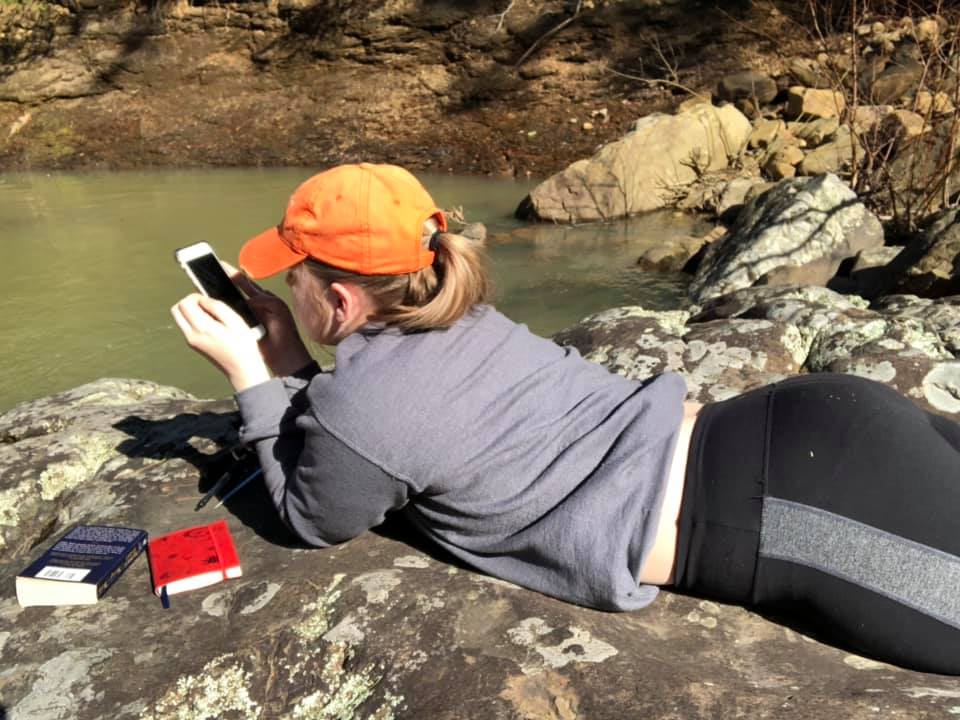
Planning the perfect camping trip can get really frustrating. The good news is that you’re not alone. Just like you, many want to know what it takes to plan a successful camp outing by themselves, or with their friends or family. That being said, up until now planning a good trip was difficult due to the lack of information on the internet.
Sarah Smith, co-founder of The Dyrt, was frustrated with how hard it was to find and research campgrounds online.
“We should make an app that helps you find and review campgrounds!” she said to her husband and soon-to-be-co-founder, Kevin, while they were out hiking one day.
The rest is history. Today, it’s much easier for any level of camper — even first-timers — to plan every stage of their camping trip. The Dyrt helps you find campgrounds, read reviews, view photos, and save campgrounds. We make planning a camping trip simple. Our newest version of The Dyrt app makes it even easier, with enhanced search features and usability.
Searching and finding a campground is a big part of planning any great adventure. But there are many other considerations, as well.
Start with these questions to plan your next camping trip:
1. Planning the Time to Camp
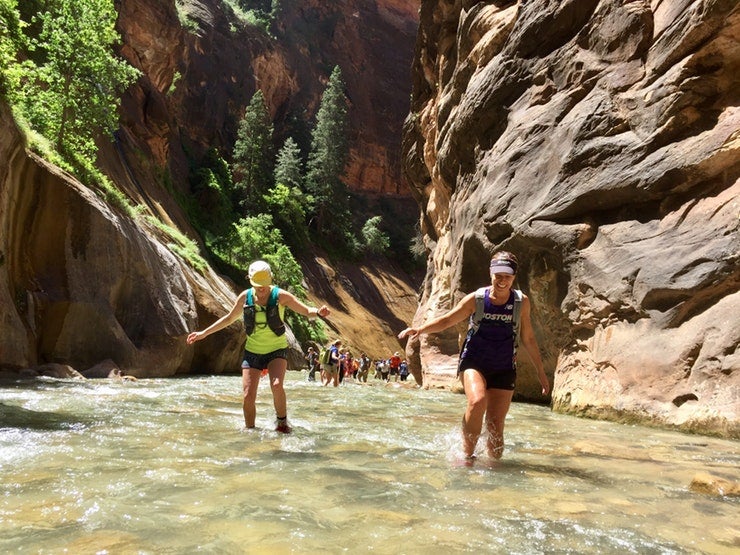
Image from The Dyrt Camper Carly E.
Since you’ll be sleeping outside, the season and the weather will have a big impact on your camping trip.
For example, Olympic National Park. sees over 150 inches of rain a year. Waking up to the patter of raindrops on your tent can be lovely. Now imagine that same scenario, but having your entire camping trip ruined by soaked and soggy gear from the night before. Not only would it be unpleasant to wear wet clothes, it would be even worse to sleep in a tent filled with them.
A lot of people have more freedom to take time off to camp in the summer, when offices slow down and kids are out of school. Initially this seems like a good idea, but it also means bigger crowds, especially at popular campgrounds and National Parks. If you’re looking for peace and quiet, why not take time off in the shoulder season instead? Or check out these national parks with backcountry camping.
Editorial Note:
The Southwest desert is a great place to plan a spring time camping trip, when places like Death Valley National Park and Joshua Tree National Park present relatively pleasant weather. Taking that into consideration, you should definitely avoid camping in Death Valley during the summer, when temperatures spike well into the triple digits.
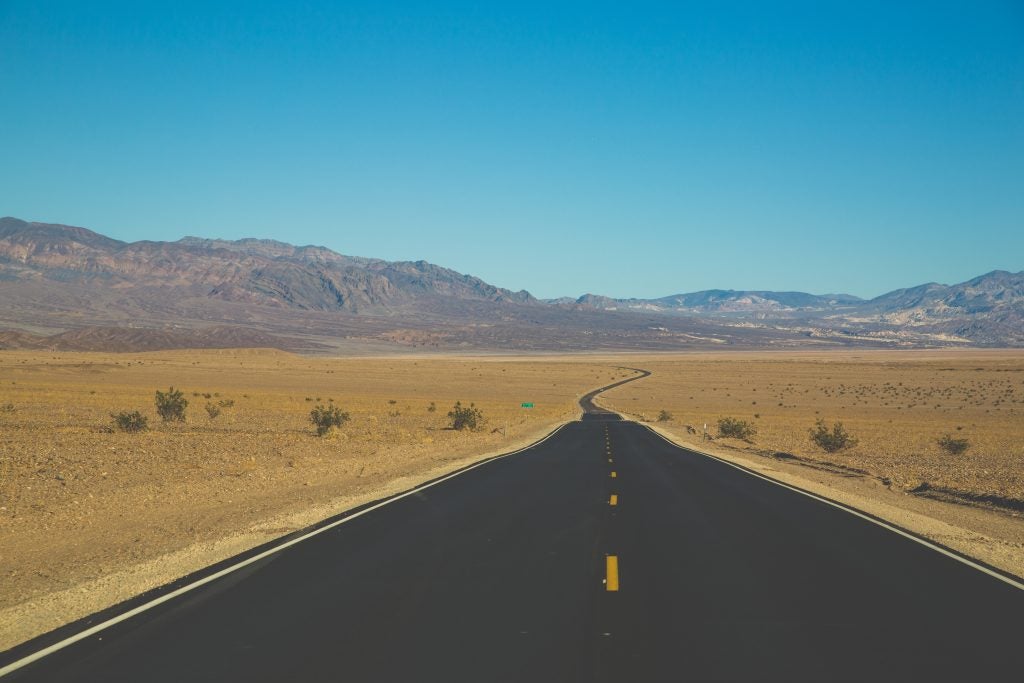
Prepare for your summer camping trips diligently. Some desert campgrounds (such as those in Death Valley) often have temperatures soaring well triple digits.
A few years back my Dad and I drove through Death Valley en route to our own Yellowstone camping trip. At times while cruising through the dry and arid California State Route 190, neither of us were able to call out (or receive calls) using our cell phones. This was the same situation with Sprint, Verizon, and later T-Mobile. We were fortunate not to have any issues with our vehicles, as the sun scorched above us escalating temperatures well over triple digits. If you’re planning to make any camping voyage, check your vehicle thoroughly and pack plenty of water, supplies, and dry food to last you in the event of an emergency.
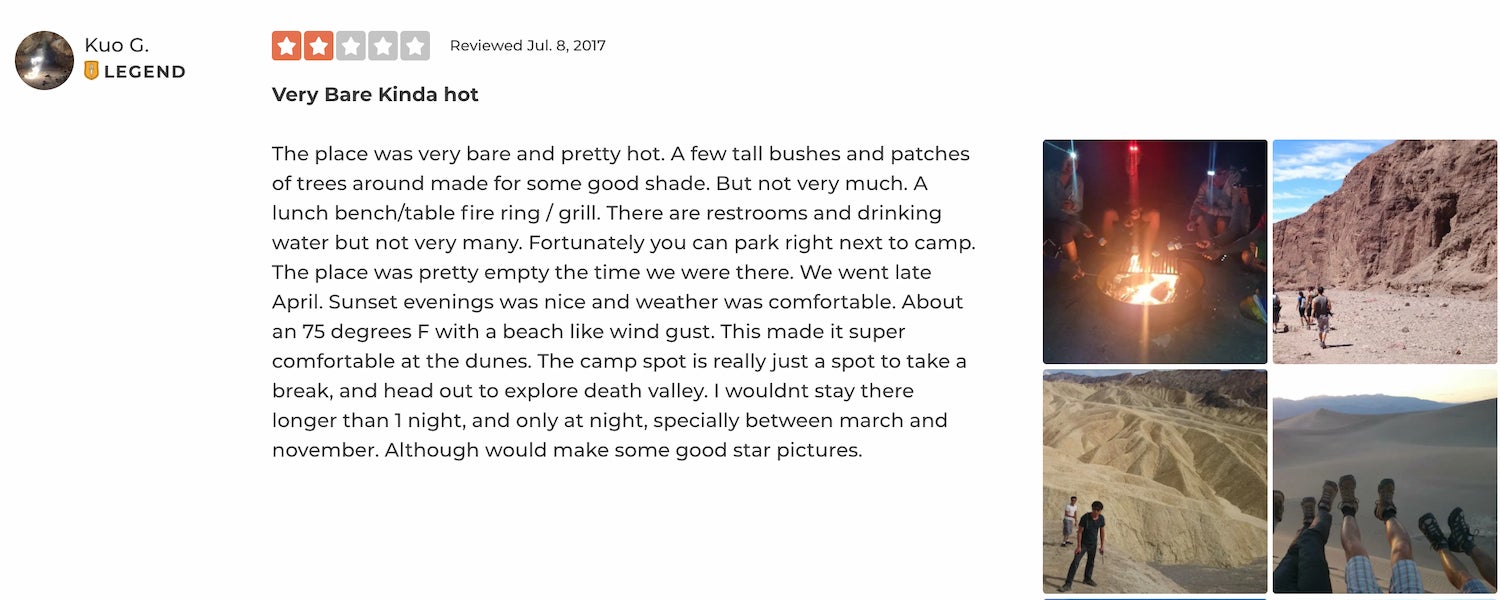
Not only will you find current weather reviews for campgrounds on The Dyrt, you’ll also find helpful accounts of the type of weather campers experienced while they were there.
When deciding when to camp, check out National Parks free days to save some money for other things, like extra s’mores ingredients.
2. How to Plan Where You’ll Camp
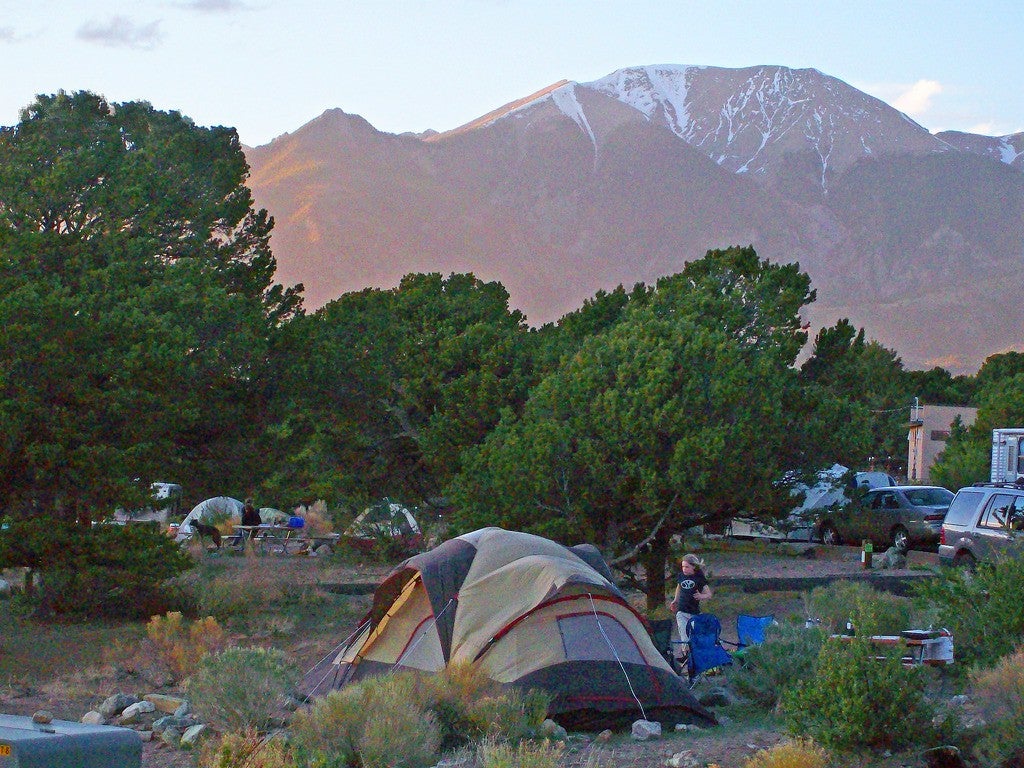
Backcountry or state park? Desert or jungle? Near or far?
At the same time that you’re thinking about when, you should also be thinking about where. The United States has such a diverse landscape to explore, from the ocean-carved cliffs of the Pacific coastline and the vast plains of the Midwest, to the thick forests next to quaint towns in New England and the jungly swampland of Florida.
Perhaps you want to camp near hot springs or waterfalls. Or maybe you’d like to sip on a craft beer after camping, in which case, camping near a brewery can be fun.
While the options are endless, you might also consider staying close to home. There’s often more to explore in our backyards than we realize, and staying close will save you time and money.
Related Reading:
The Dyrt’s Ever-Expanding Guide to Camping in National Parks
3. Choose the Best Camping Activities Before Leaving
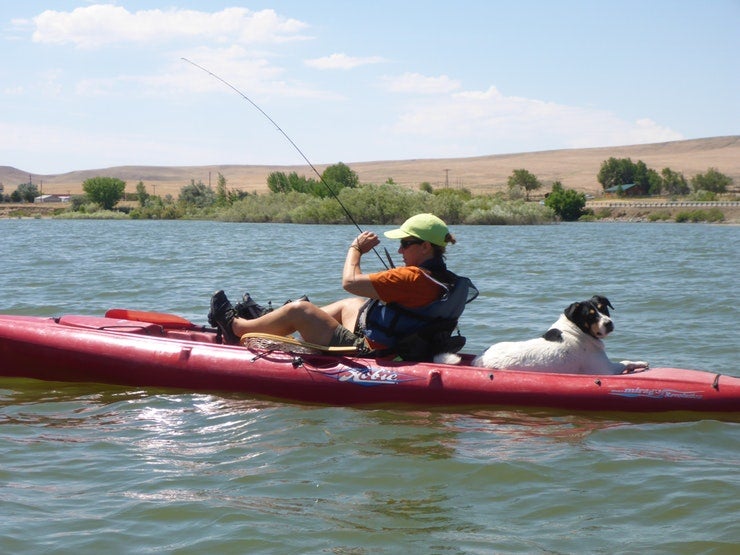
Image of Farewell Bend Campground in Oregon, from The Dyrt Camper Ed E.
As you’re planning your camping trip, ask yourself this: will you be content to spend your time enjoying the campground? Or in contrast, do you camp as a means to reach other activities, like hiking, rock climbing, or mountain biking?
There are plenty of ways to plan your camping trip. But if activities outside of the campground are your priority, then you’ll want to think about access to your outdoor adventure of choice.
You can find campgrounds near running trails, or bouldering destinations with campgrounds nearby. You can camp near streams for fishing and boating, or camp near trails for hiking.
There’s a campground for every adventure and every camper. Use The Dyrt to read campground reviews and find out what campers are up to, in and around the campground.
4. The Best Camping Trips Always Start with Quality Directions
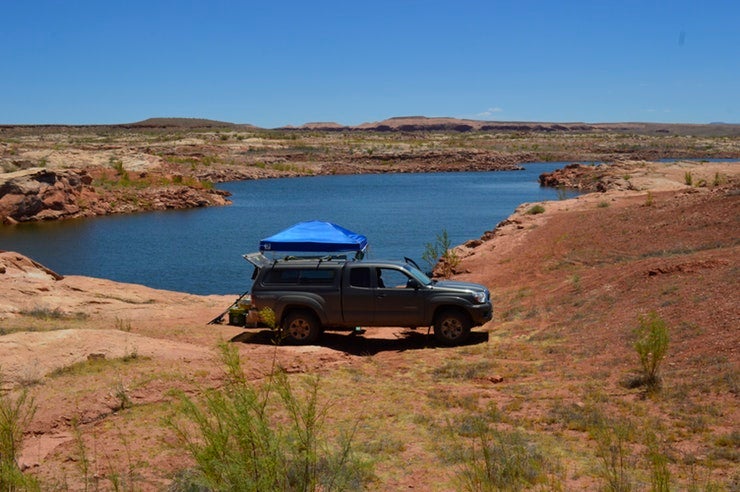
Image of Stanton Creek – Glen Canyon Campground in Utah, from The Dyrt Camper Shannon C.
Car camping is the most convenient way to reach the campground. (Car camping refers to driving up to a campground — not sleeping in your car.) When you car camp, you don’t have to worry about packing extremely light. You can bring the double burner stove, the cooler full of beer, and the dutch oven desserts.
That being said, if you’re planning on hiking into a campground, you’ll have to be more selective. That being said, backcountry camping can be a great way to avoid the crowds on your camping trip and discover some solitude in nature.
Other campgrounds are only accessible by boat, which can be a unique way to embrace the elements.
Don’t own a car? Consider planning a camping trip utilizing campgrounds you can reach via public transportation.
5. Plan Your Trip Around the People Camping With You
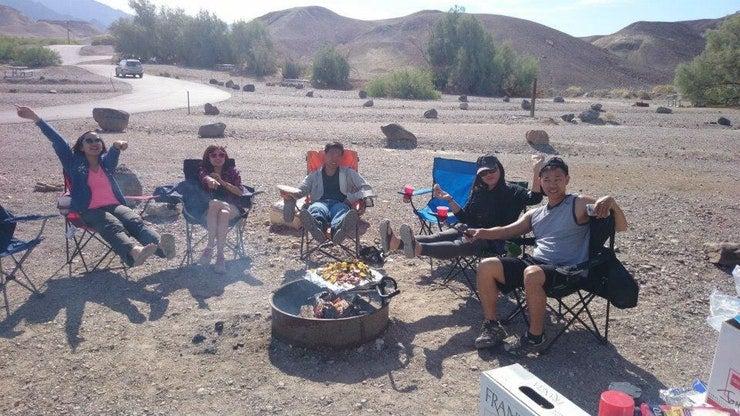
Image of Furnace Creek Campground in Death Valley National Park, from The Dyrt Camper Kuo G.
It’s time to rally the troops. Or don’t, and camp solo.
When planning your camping trip, make sure to know how many people are going in advance. Your group size will dictate what kind of campsite you require, how much food to pack, and the level of organizing between parties. Too many people can make your trip a logistical nightmare. (Who was supposed to bring the tent stakes??) But lots of campgrounds accommodate large groups. So if you are bringing a party for your next camping trip, be sure to find a campground that can comfortably fit all your friends.
6. Remember to Reserve Your Campsite
Every good camp planner will remember to reserve their campsite in advance. This is especially important in the summer months when many campgrounds are full on the weekends. Don’t forget to make reservations if you need them! You’ll find information on whether a campground can be reserved in the campground details section on The Dyrt.
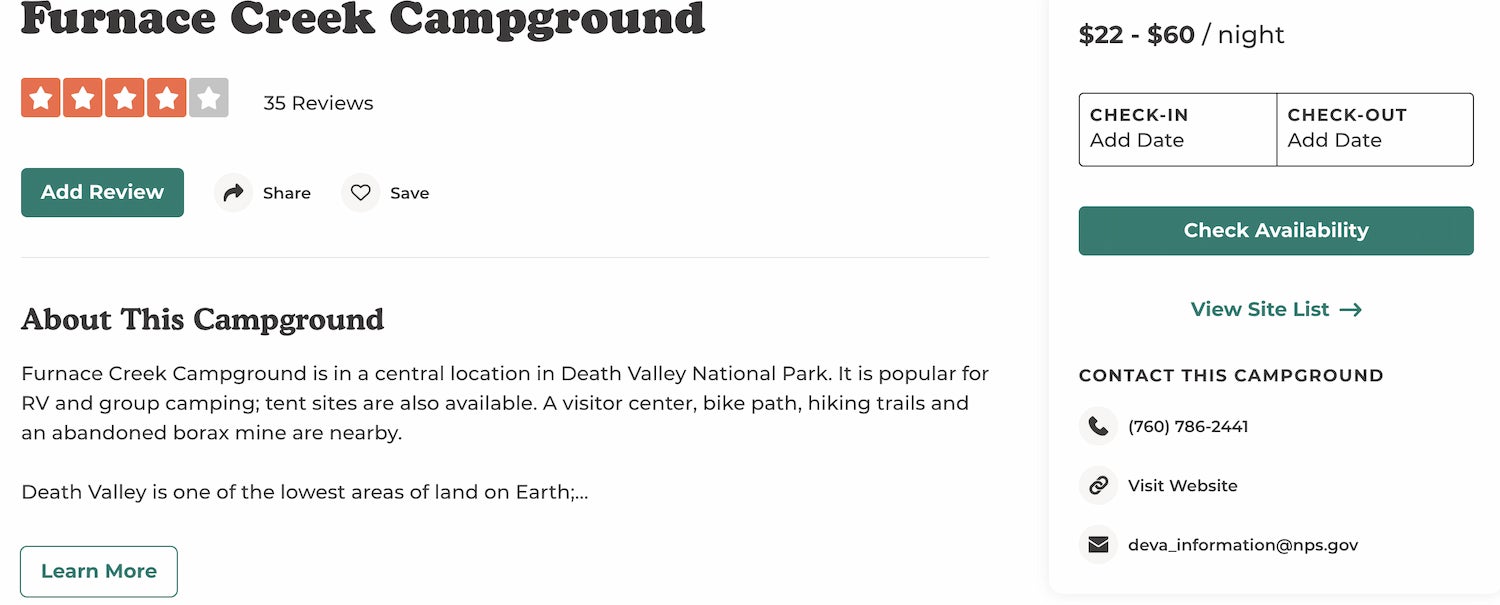
Some campgrounds restrict the number of guests in order to preserve a delicate environment. They do this through limited camping reservations and permits. If you want to camp in a place like Havasu Falls — a sacred place to the Havasupai people and a delicate desert ecosystem in Arizona — you’ll need to get a permit months in advance.
Some popular hikes require permits as well. You’ll need to enter the lottery for Half Dome permits in March of the year you want to climb this iconic dome face. Other outdoor activities that require permits include driving Denali Road in Alaska, backpacking through the Enchantments in Washington, and rafting the Colorado River through the Grand Canyon.
7. Planning the Best Campground for Your Needs
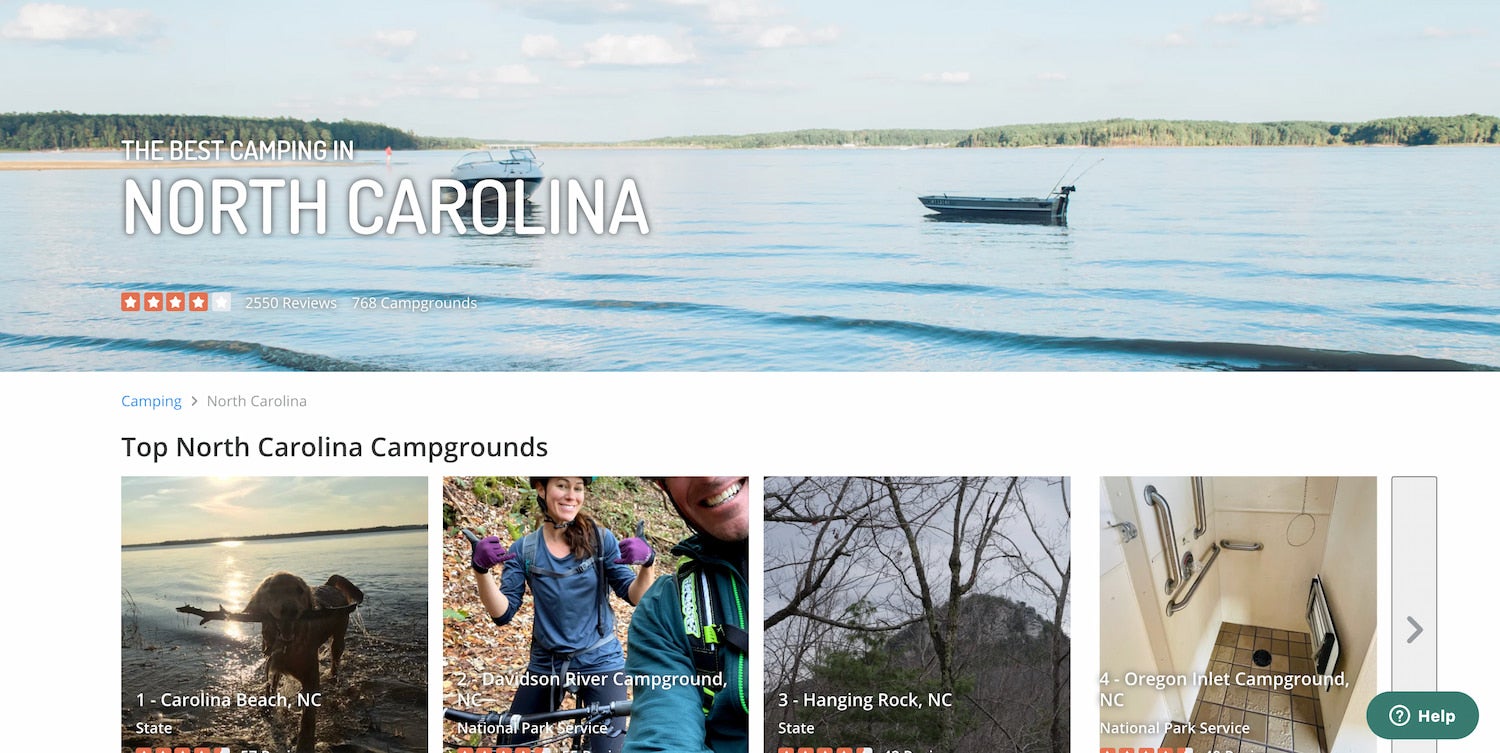
Planning the best best campground for your needs is not always that easy. As a camp planner, you need to know the quirks and benefits of wherever you’ll be staying. In the past knowing this came down to word of mouth and some luck, but thanks to our new app (android), gone are the days of camp planning woes.
Both the Android, as well as the iPhone’s (IOS) search feature allows you to view campground photos, videos, and reviews, so you can compare your options and make the best decision on a campground.
Once you start browsing campgrounds, save a list so you have them all in one place. The Dyrt’s Save a List function allows you to create custom lists, and add notes to each campground. Did your friend tell you about a great campground you should check out on your next camping trip? Add it to a list? Did you discover a campground that looks perfect on The Dyrt? Add it to a list!
We’ve created some themed lists that might give you some inspiration on planning where to camp:
- 21 Campers Share Their Favorite Campgrounds Across the U.S.
- Dog-Friendly Campgrounds in Utah
- Campgrounds Around the Enchantments
Creating your own list allows you to keep track of the campgrounds you’re interested in, so you don’t lose that perfect discovery once you find it.
If you’re planning a campsite once you arrive at your campground, look for even ground, shade, and natural features that offer privacy.
8. Preparing a Soul Warming Meal Plan
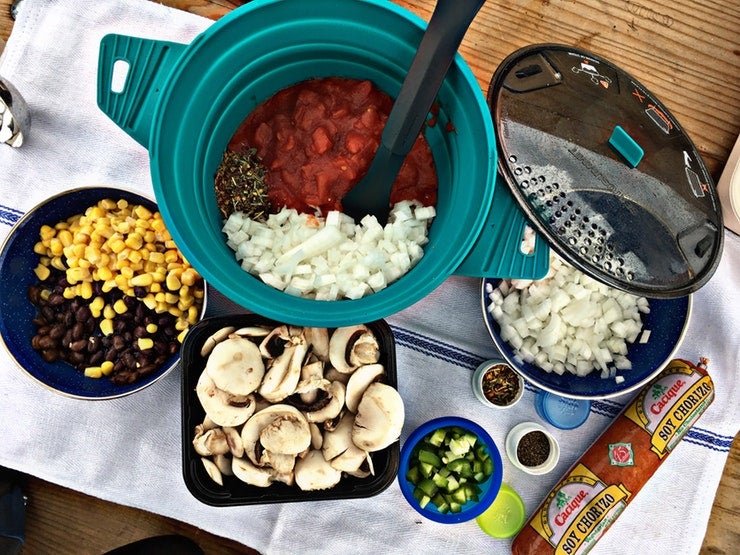
Image from The Dyrt user Chanel C.
Now that you know to plan the when and where for your camping trip, you can now move on to planning camp meals and the planning camp gear you’ll need on your camping trip.
If you’re just getting started as a camp planner, we recommend keeping it simple. When it comes to gear, you really only need 6 basic camping necessities for your first time at the campground.
When it comes to cooking, you can get adventurous or keep it simple. We created this guide to simple campground cooking to get you started. But if you love to work the kitchen, bring the extra ingredients and have yourself a feast!
If you’re camping with other people, be sure to collaborate on ingredients so you don’t end up with ten bags of marshmallows and nothing to eat for dinner.
9. Get The Dyrt App to Plan Your Next Camping Trip
You’ve found your campground and marked your dates on the calendar. You are ready to go camping.
Now don’t forget to download The Dyrt app for iOS and Android so you can find and review your campgrounds on-the-go. When you add photos and reviews of your campground on The Dyrt, not only will you be making camping better for everyone — you’ll also be in the running for a ton of free camping gear as part of our Camping Giveaways. We partner with outdoor gear brands who want to make camping better for everyone. Don’t miss out on the fun.
We can’t wait to see all of the places you camp this summer!
The post How to Plan a Camping Trip: 10 Steps to an Unforgettable Excursion appeared first on The Dyrt Magazine.


